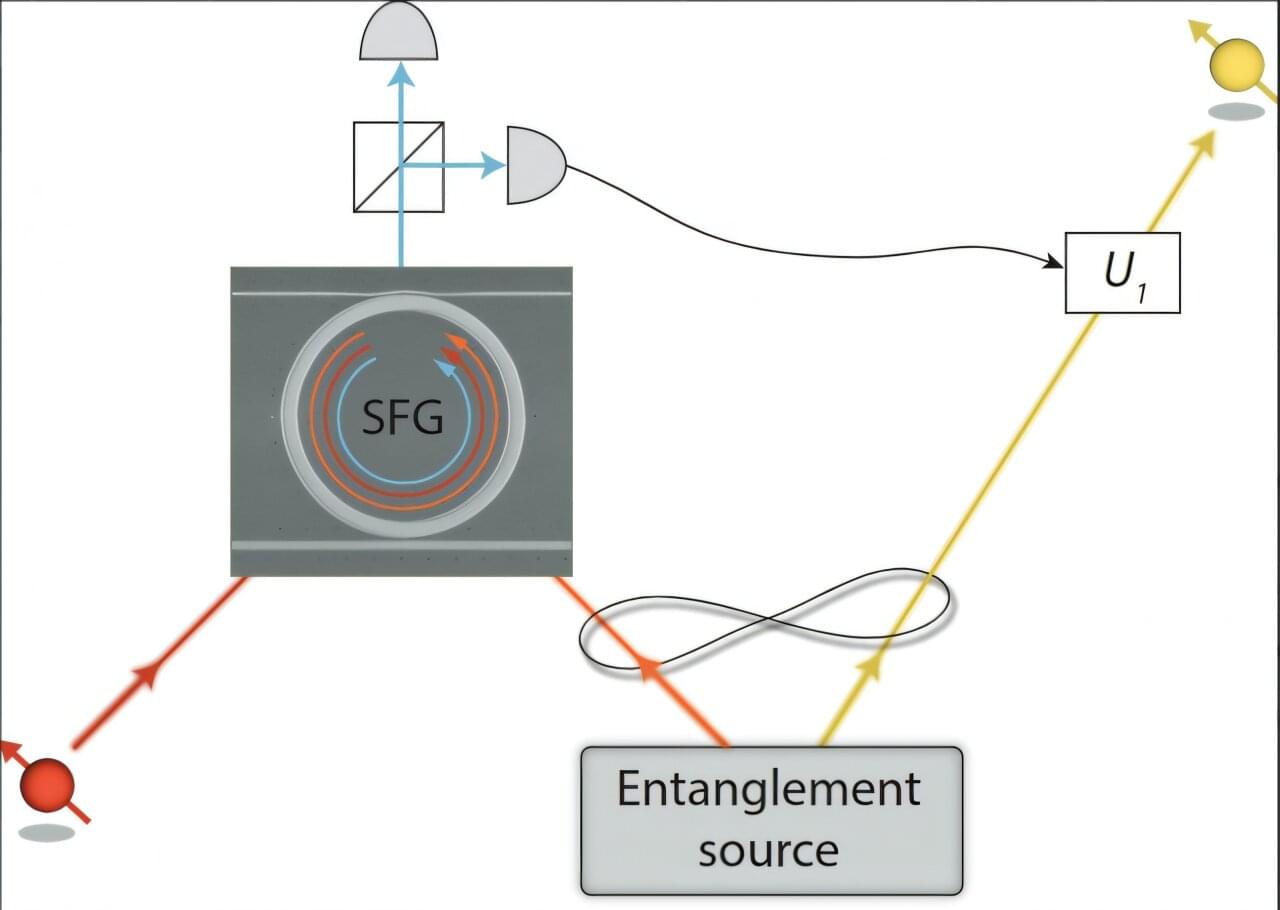Researchers have long recognized that quantum communication systems would transmit quantum information more faithfully and be impervious to certain forms of error if nonlinear optical processes were used. However, past efforts at incorporating such processes could not operate with the extremely low light levels required for quantum communication.
Now, a team at the University of Illinois Urbana-Champaign has improved the technology by basing the nonlinear process on an indium-gallium-phosphide nanophotonic platform. The result is substantially more efficient than prior systems, meaning that it requires much less light and operates all the way down to single photons, the smallest unit of light. For the first time, there is a path forward to making quantum communication systems with nonlinear optics feasible.
“Our nonlinear system transmits quantum information with 94% fidelity, compared to the theoretical limit of 33% on systems using linear optical components,” said Kejie Fang, an Illinois professor of electrical and computer engineering and the project lead. “This alone demonstrates the power of quantum communication with nonlinear optics. The big problem to solve is efficiency. By using a nanophotonic platform, we saw the efficiency increase by enough to show that the technology is promising.”
